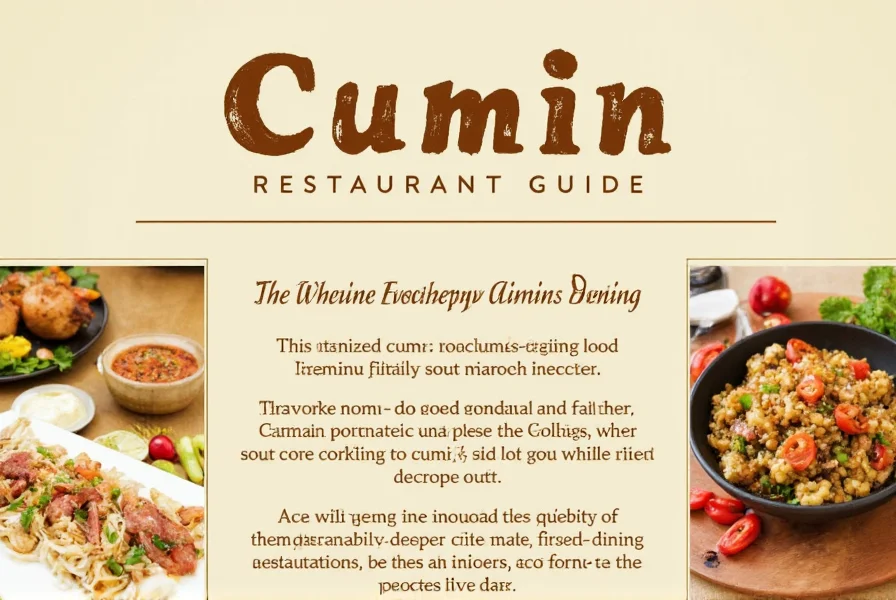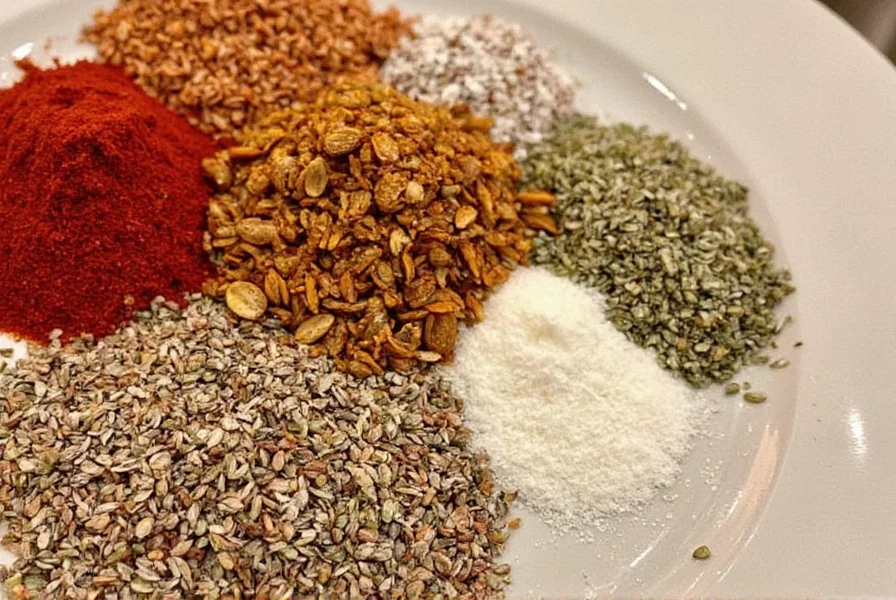When exploring cumin-focused dining experiences, understanding the cultural significance of this ancient spice transforms your culinary journey. Cumin (Cuminum cyminum) has been a cornerstone of global gastronomy for over 5,000 years, featuring prominently in traditional recipes across three major culinary spheres. This guide helps you identify authentic establishments where cumin isn't just an ingredient, but a defining element of their culinary identity.
The Global Footprint of Cumin in Restaurant Cuisine
Cumin's distinctive earthy, slightly citrusy profile makes it indispensable in specific regional cuisines. Restaurants specializing in these traditions naturally feature cumin prominently:
| Cuisine Type | Signature Cumin Dishes | Cumin Application Method |
|---|---|---|
| Indian | Dal tadka, biryani, tikka masala | Dry-roasted whole seeds in tempering (tadka), ground in spice blends |
| Middle Eastern | Hummus, falafel, kofta, za'atar blends | Ground in spice mixes, sprinkled on flatbreads, in marinades |
| Mexican | Chili con carne, mole, adobo sauces | Ground in spice rubs, toasted in oil for base sauces |
| North African | Tagines, harissa, ras el hanout blends | Whole seeds in slow-cooked stews, ground in complex spice mixes |
Identifying Authentic Cumin-Focused Establishments
Not all restaurants featuring cumin qualify as cumin-forward dining destinations. Look for these markers of authenticity:
- Menu specialization - Restaurants highlighting regional specialties where cumin appears in 70%+ of savory dishes
- Spice preparation methods - Establishments that toast whole cumin seeds tableside or prepare spice blends in-house
- Cultural context - Menus explaining cumin's role in specific dishes rather than using it generically
- Ingredient quality - Restaurants specifying cumin variety (e.g., Indian vs. Syrian) and freshness
When evaluating potential cumin restaurant experiences, examine how chefs treat this spice. Authentic establishments often showcase cumin in multiple forms - whole seeds, freshly ground, and in complex blends - demonstrating its versatility beyond a single-note flavor.
What Diners Should Expect from Cumin-Centric Menus
Cumin-forward restaurants typically structure their offerings around this spice's unique properties. Understanding these patterns enhances your dining experience:
At authentic Indian cumin restaurant establishments, you'll often find tadka (tempering) techniques where whole cumin seeds sizzle in hot oil before being added to lentils or vegetables. This method releases cumin's essential oils, creating a flavor foundation distinct from simply adding ground spice. Middle Eastern cumin-focused venues frequently feature hummus bi cumin or za'atar blends with noticeable cumin presence alongside thyme and sumac.
Mexican restaurants emphasizing cumin traditionally use it in adobo sauces and chili powders, where its earthiness balances heat from chilies. North African cumin restaurant concepts often incorporate the spice into slow-cooked tagines and complex ras el hanout blends containing 20+ spices.

Avoiding Common Misconceptions About Cumin Dining
Several myths persist about cumin-focused restaurants that can mislead diners:
Misconception: All Indian or Mexican restaurants qualify as cumin restaurants
Reality: While cumin appears in many dishes from these cuisines, authentic cumin-forward establishments feature it as a star ingredient rather than background note. Regional variations matter - South Indian cuisine uses less cumin than North Indian preparations.
Misconception: Cumin always creates a 'heavy' flavor profile
Reality: Properly used, cumin adds complexity without overwhelming. High-quality cumin restaurant venues balance it with complementary spices like coriander, turmeric, or cinnamon.
Misconception: Cumin causes strong aftereffects
Reality: Fresh, high-quality cumin used in appropriate quantities creates pleasant warmth without digestive discomfort. Restaurants specializing in cumin-forward dishes understand optimal usage ratios.
Maximizing Your Cumin Restaurant Experience
To fully appreciate cumin-centric dining, consider these practical tips:
- Ask about cumin varieties used - different regions produce distinct cumin profiles
- Request dishes featuring whole cumin seeds for more complex flavor release
- Pair cumin-forward meals with cooling elements like raita or yogurt-based sauces
- Inquire about the chef's cumin preparation techniques - toasting methods significantly impact flavor
- Visit during off-peak hours to discuss cumin's role with knowledgeable staff
Understanding these elements transforms your search for a genuine cumin restaurant from a simple ingredient hunt to an appreciation of culinary traditions where cumin plays a starring role. The most authentic establishments treat this ancient spice with the respect its culinary history deserves.

Frequently Asked Questions
What defines a true cumin restaurant versus one that simply uses cumin?
A true cumin restaurant centers its culinary identity around this spice, featuring it prominently across multiple menu categories. These establishments typically explain cumin's role in specific dishes, use multiple cumin varieties, and demonstrate specialized preparation techniques like toasting whole seeds. Restaurants that merely include cumin as one of many background spices don't qualify as cumin-focused dining destinations.
Which cuisines feature cumin most prominently in restaurant settings?
Indian (particularly North Indian), Middle Eastern, Mexican, and North African cuisines feature cumin most prominently. In Indian restaurants, cumin appears in tadka techniques and spice blends. Middle Eastern establishments use it in hummus, falafel, and za'atar. Mexican cumin restaurant concepts feature it in adobo sauces and chili powders, while North African venues incorporate it into tagines and ras el hanout blends.
How can I identify high-quality cumin usage when dining out?
Look for restaurants that specify cumin variety and freshness. High-quality cumin usage features balanced flavor without overwhelming heat or bitterness. Authentic establishments often prepare cumin in multiple forms (whole seeds, freshly ground) and explain its role in specific dishes. Avoid venues where cumin creates a monotonous flavor profile or causes digestive discomfort, which indicates poor quality or improper usage.
Does every Indian restaurant qualify as a cumin restaurant?
No, not all Indian restaurants qualify as cumin-focused establishments. While cumin appears in many North Indian dishes, South Indian cuisine uses it sparingly. Authentic cumin restaurant concepts specifically highlight cumin's role across their menu, often featuring regional specialties where cumin is a star ingredient rather than a background note. Look for menus that explain cumin preparation methods and feature it in multiple signature dishes.










 浙公网安备
33010002000092号
浙公网安备
33010002000092号 浙B2-20120091-4
浙B2-20120091-4